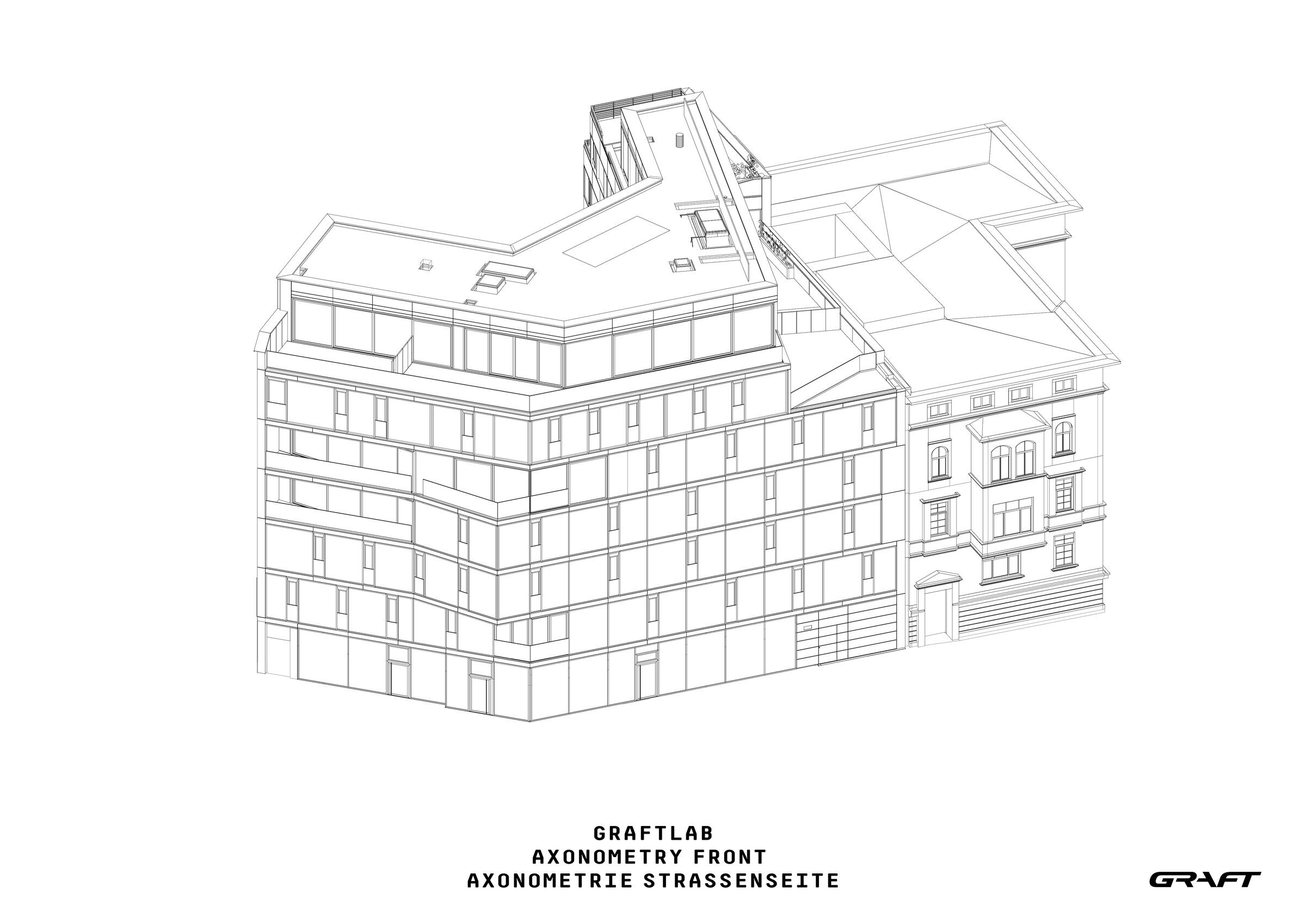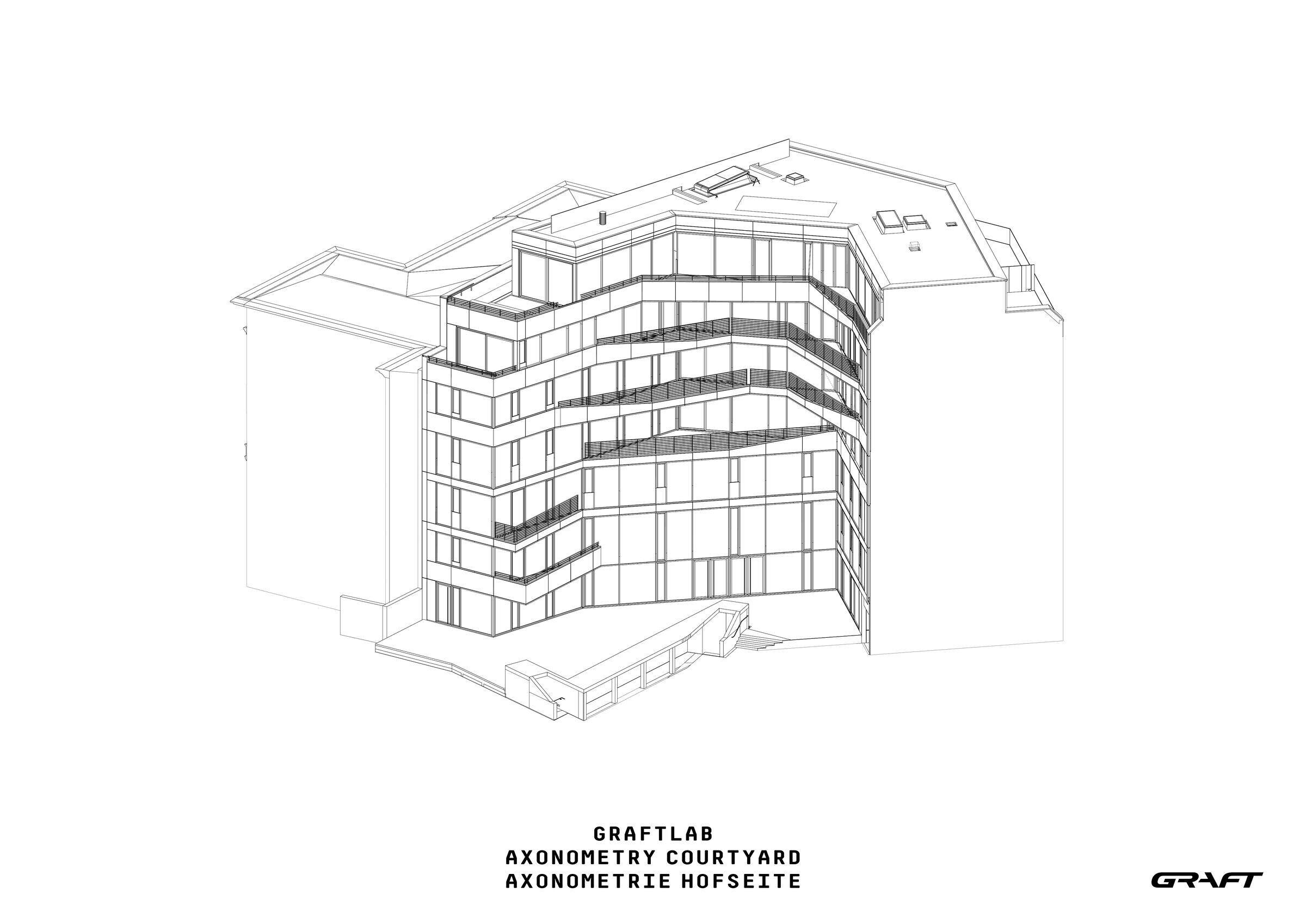GRAFTLAB was conceived as a laboratory for modern working environments within the creative industry and fosters new collaborative formats through a focus on flexibility and cooperation. Located in the heart of Berlin, its open, transparent design represents the significance the creative sector plays in the city.
In the context of future-oriented work formats - from conventional office presence and digital transformation to remote working and third places – GRAFTLAB provides ample scope for collaboration and coming together. The plot, at the intersection of Invalidenstrasse and Ackerstrasse in the north of Berlin’s Mitte district, was bought by GRAFT’s founding partners in 2013.
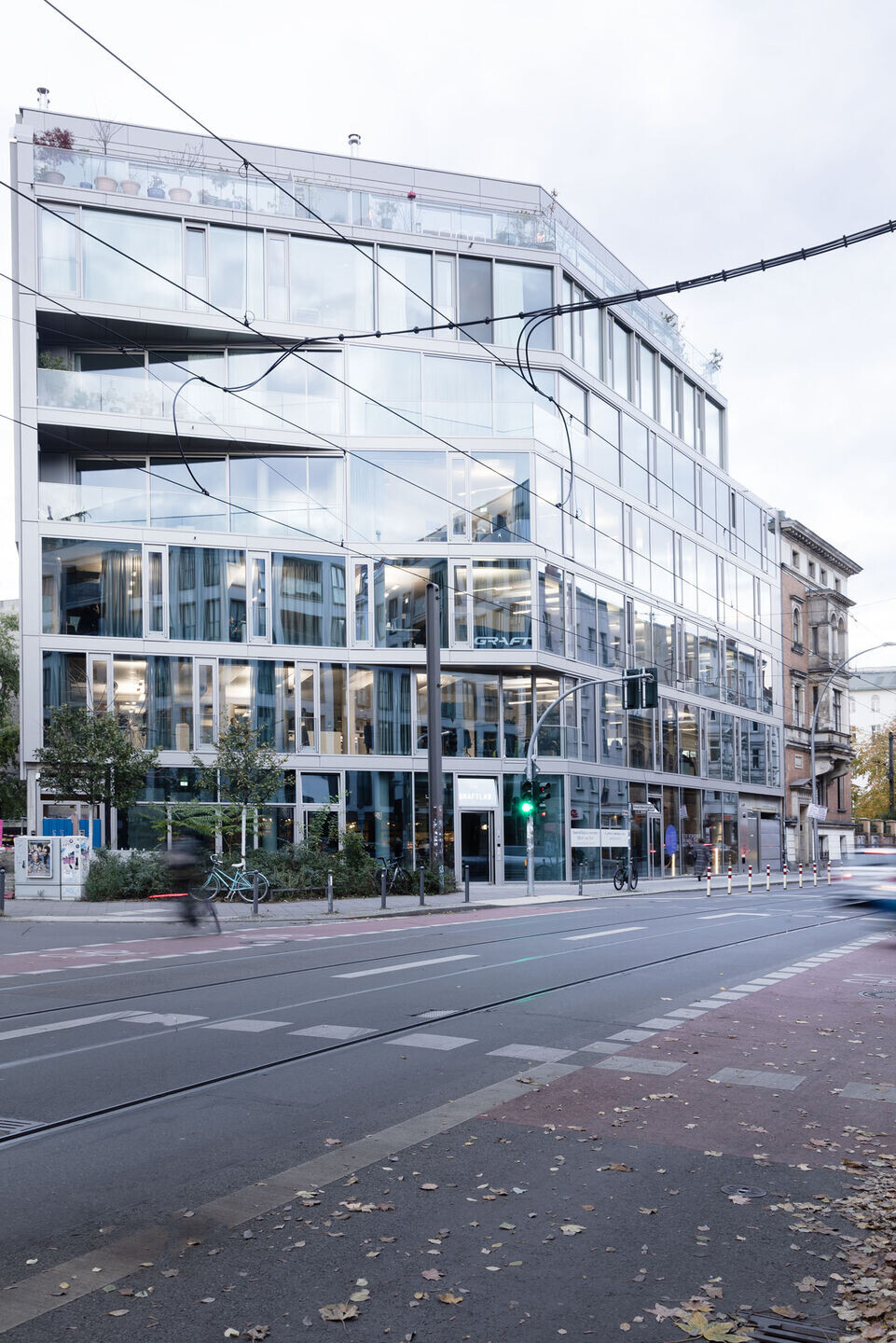
With its integrated apartment units, GRAFTLAB combines living and working in the mixed-use housing typical of the classical Berlin quarter. The new building is characterized by the contrast between the urban vibrancy of the lively Invalidenstrasse and the quiet refuge of the landscaped inner courtyard.
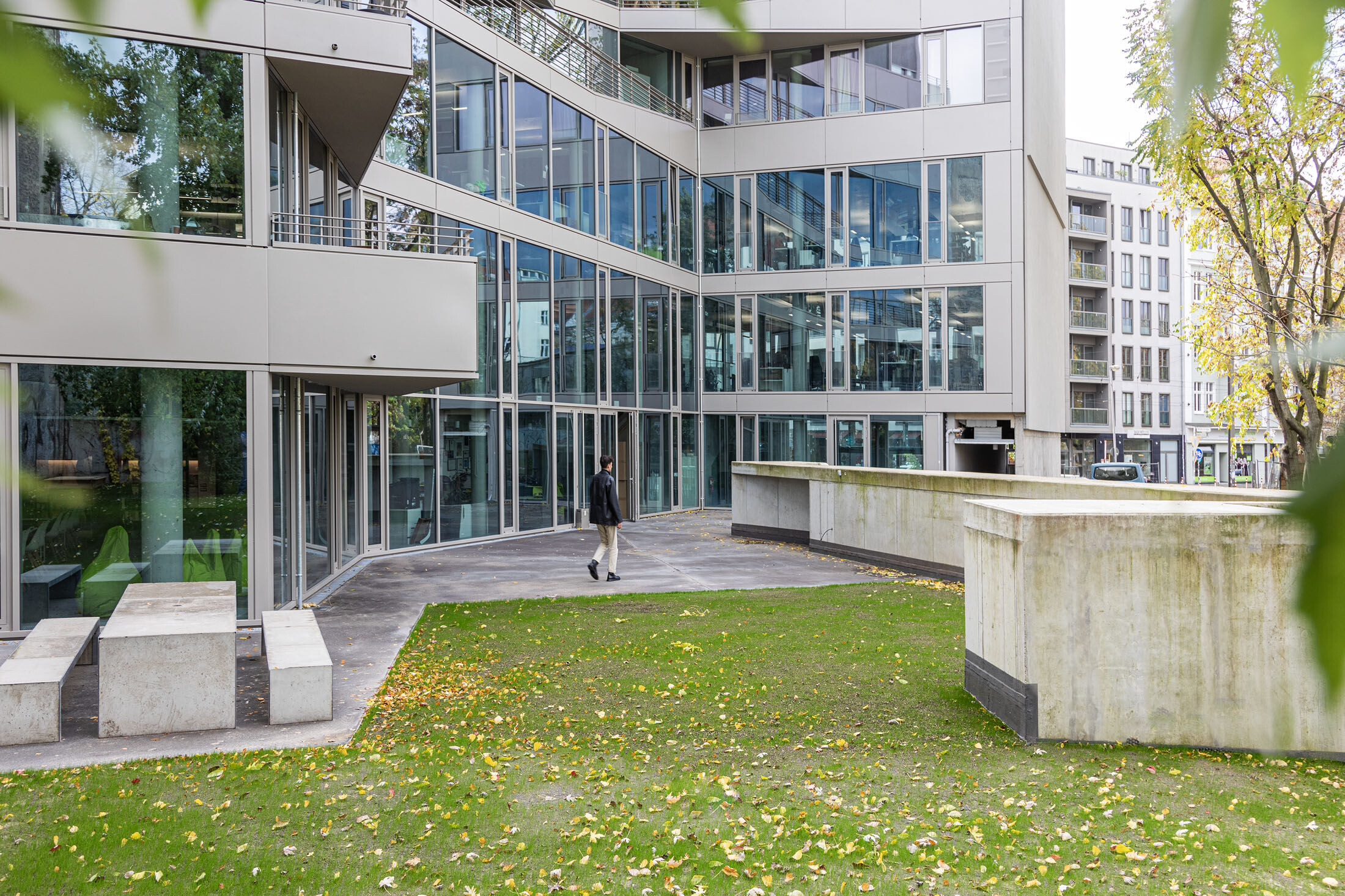
The new volume deftly takes advantage of the difficult geometry of the plot – its L-shaped form completes the perimeter block along the street and encloses the firewall of the adjacent buildings, thus enabling a generous green space to the rear. The neigboring property is a listed ensemble belonging to a Protestant parish, which includes a church designed by Karl Friedrich Schinkel that was severely damaged in World War Two. As a new urban element, GRAFTLAB’s set-back upper stories and cubature seek to mediate between this historical ensemble and the higher buildings of the surroundings.
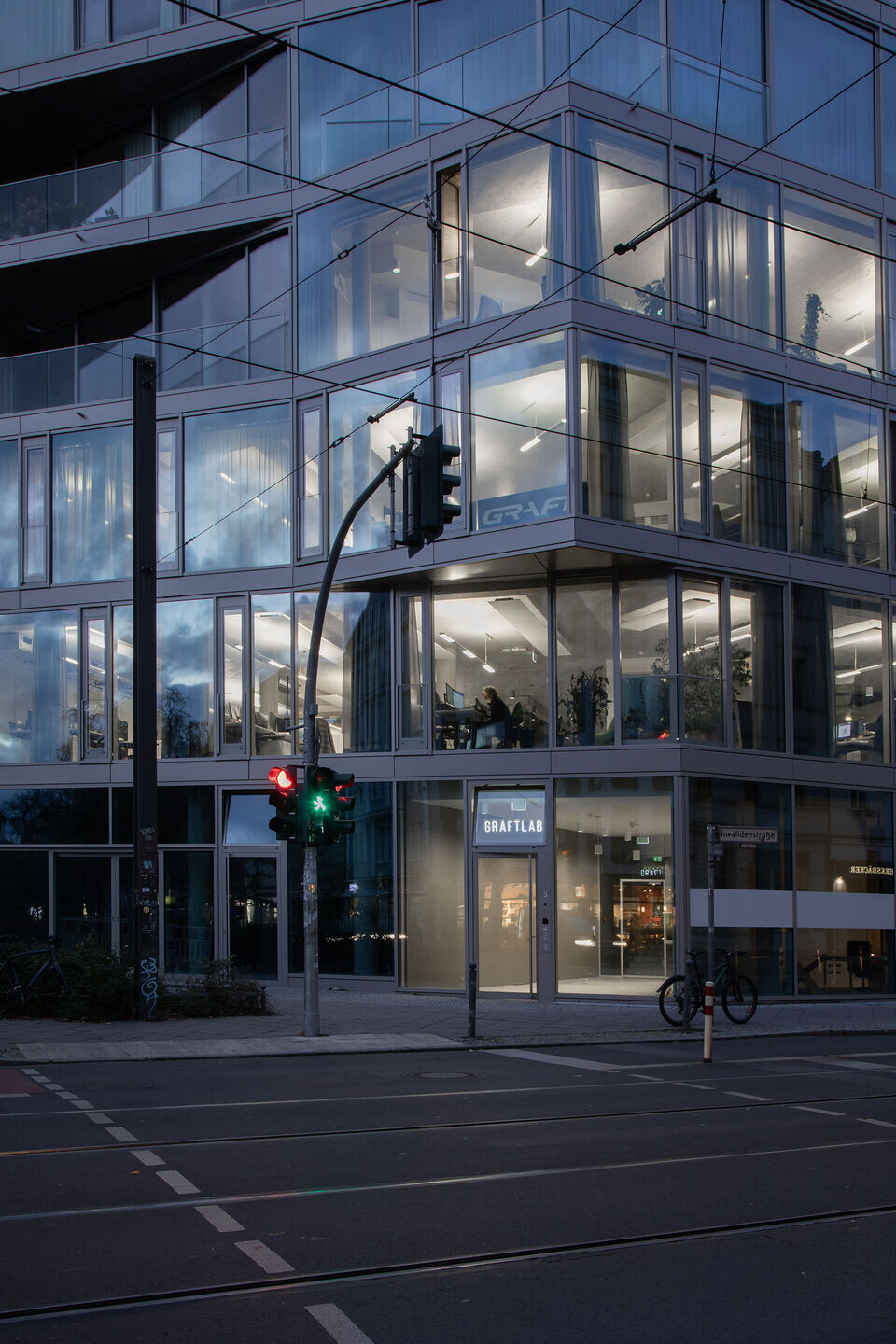
While the folding and unfolding of the façade along Ackerstrasse accentuates the corner of the building, at the same time it creates a visual reference to the protruding bay window of the neighboring clergy house. GRAFTLAB’s entire outer shell was designed as a calm, continuous, and homogenous glass façade with horizontal sand-coloured metal cladding elements. These, along with all other aspects of the façade, were agreed upon with the local heritage protection office – the colour a visual reference to the formal sandstone elements of the clergy house.
GRAFTLAB’s six floors are home to the Berlin offices of GRAFT architects, the office spaces of other companies from the architectural and cultural scene, commercial units, as well as five apartments. From the very beginning of the planning process, rather than constructing a single-use premises, the aim was to create a building with a vibrant, mixed community that would become an active part of Berlin’s cultural scene – a proven factor in revitalizing local neighborhoods and contributing to the continued development of the German capital.
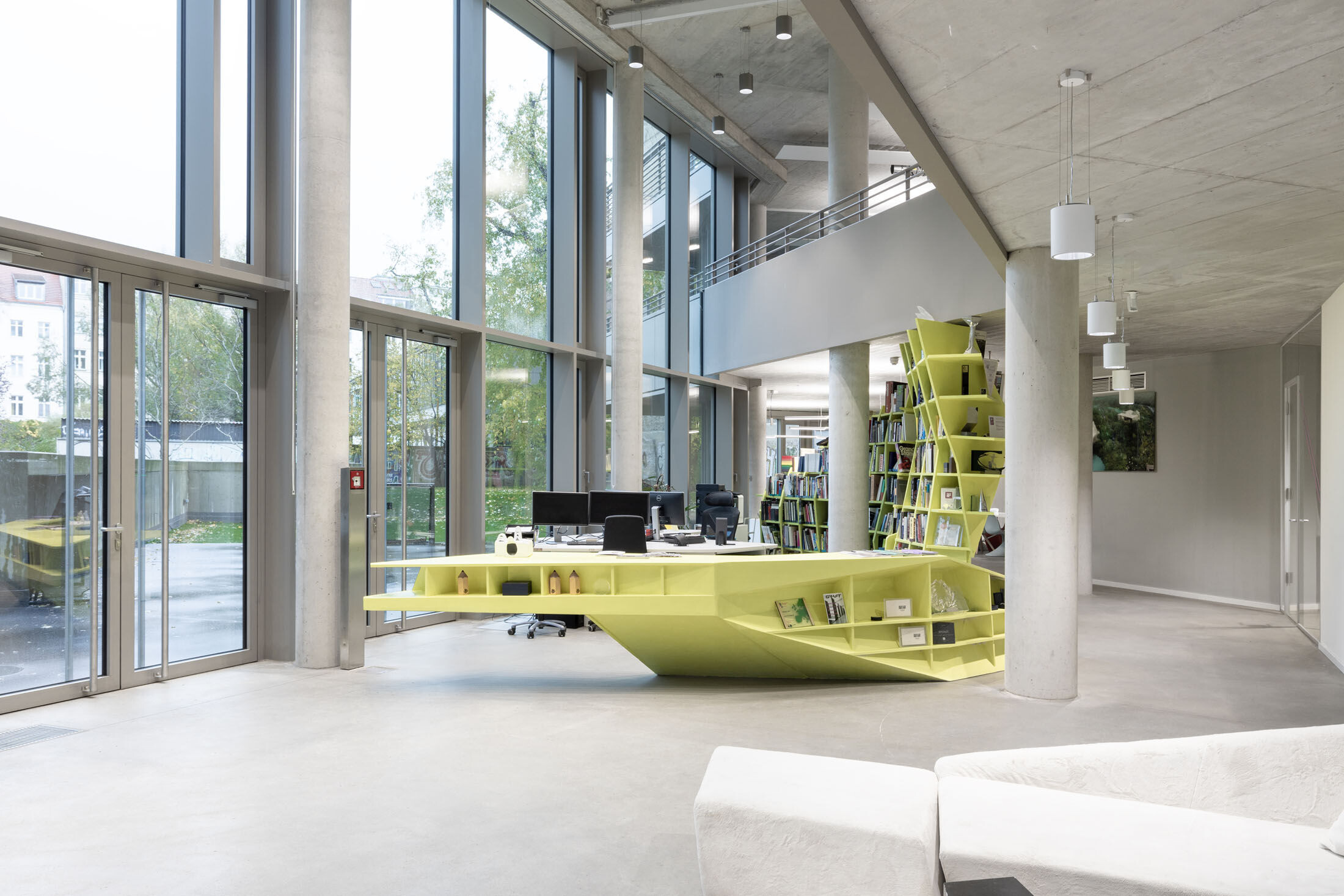
The GRAFT architects’ offices are designed as an open landscape offering amenities for the various aspects of everyday office life, starting with the generous open staircase in the entrance area, which functions as an auditorium for presentations by staff or external partners. The entire ground floor is a communal area for employees, which blurs the distinction between indoor and outdoor space: a place where community-building, physical activity, and meetings all flow and merge into one another.
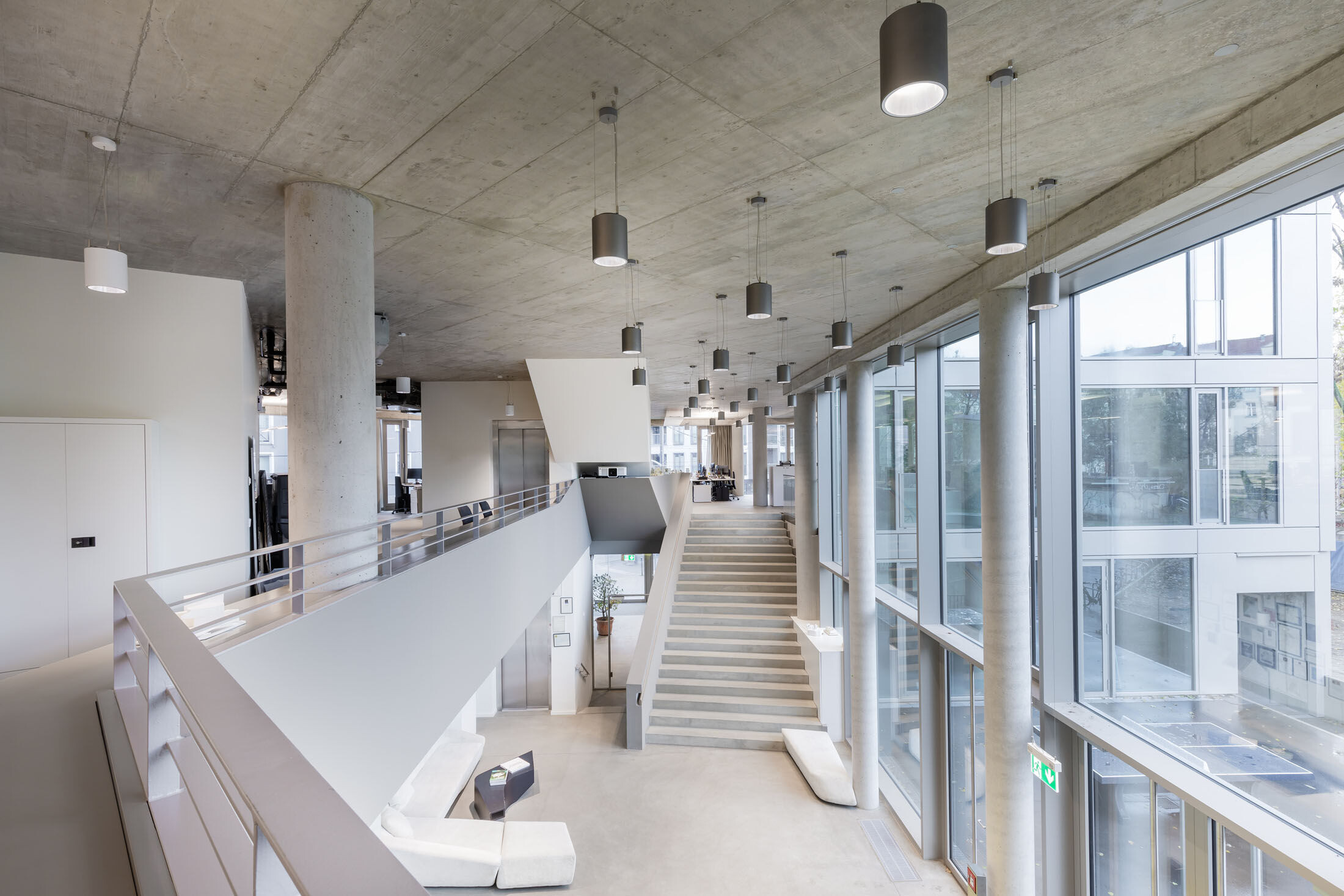
The GRAFT office extends across three floors, which, by way of their connected air spaces, form a spatial continuum. The working areas are designed as variable open spaces, interspersed with internal phone boxes, lounges, and other familiar elements such as kitchenettes and meeting zones. Independent from the offices beneath, the fourth floor houses the conference level – a range of fluid forms in eggshell white. This spatial separation gives other GRAFTLAB tenants and external partners the opportunity to independently use and access the flexible, light-filled rooms of the conference area without interruption.
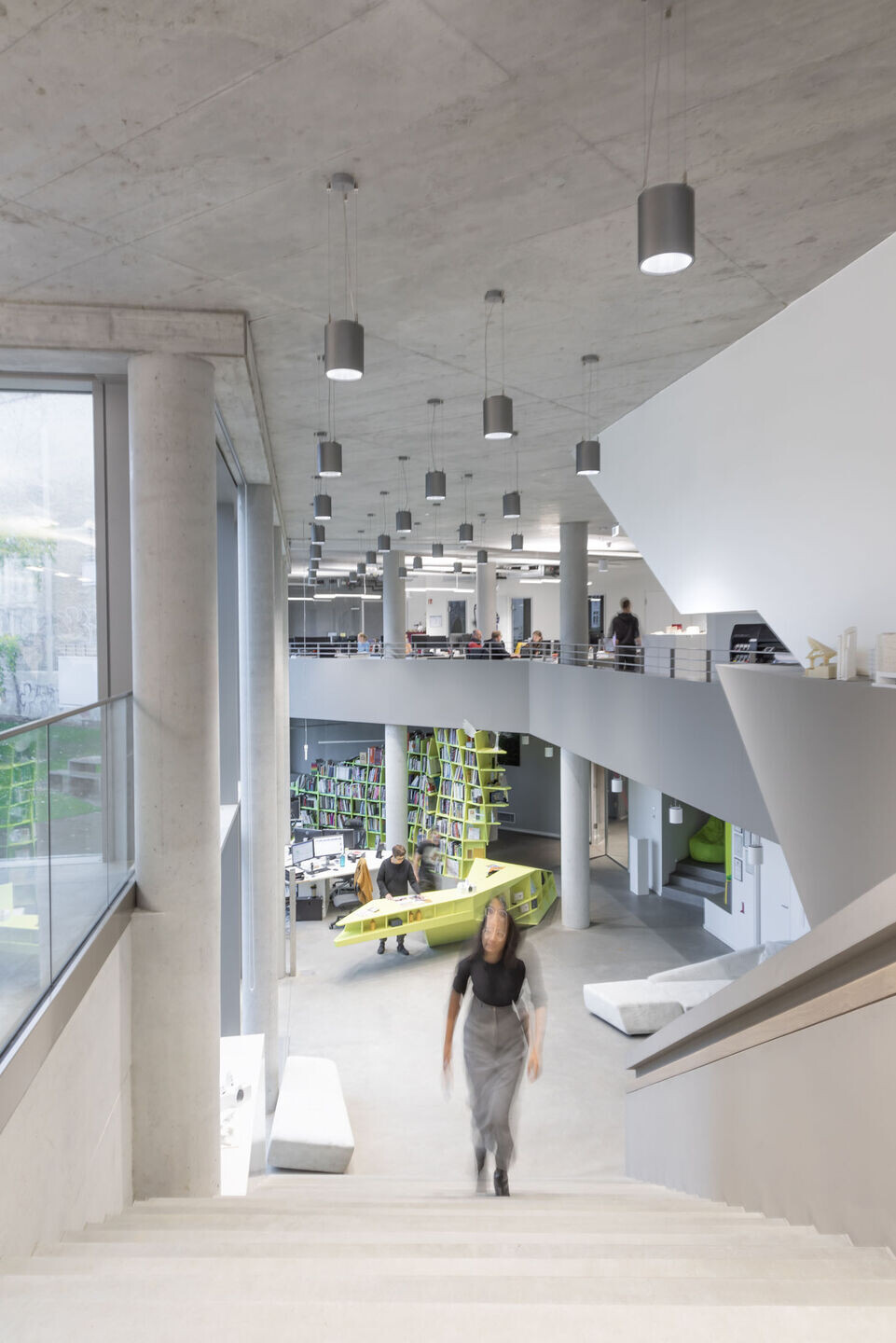
All floors have access to the fully glazed rear side of the building, which offers views of the landscaped rear courtyard as well as the adjacent park. The ground floor of the building provides barrier-free access to the greenery of this rear area, which features an example of GRAFT’s SOLARKIOSK – developed as a driver of growth through clean energy in off-grid communities in Africa.
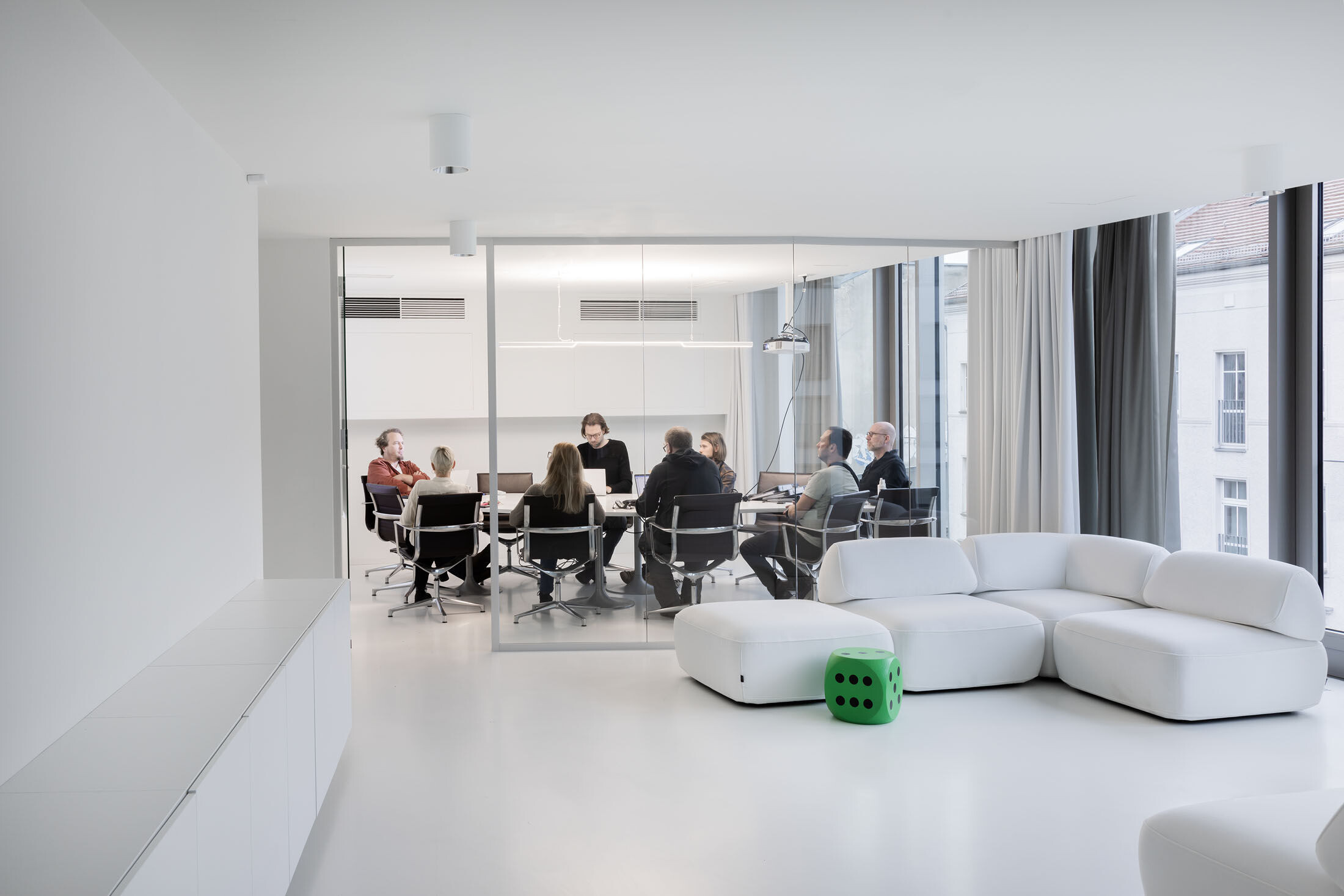

GRAFTLAB’s building services are based on a mix of high- and low-technology: instead of relying on a complex automated air-conditioning system, the building takes advantage of natural airflow from the underground carpark into the upper office floors. To ensure night-time cooling in summer, air from the building’s colder north side is drawn in and circulated within the building. On hot summer days, a ventilation system powered by an efficient biogas CHP unit provides additional cooling. Any surplus energy generated is fed into the e-charging stations in the underground carpark, thus redistributing the building’s energy efficiency into clean mobility in the urban realm.
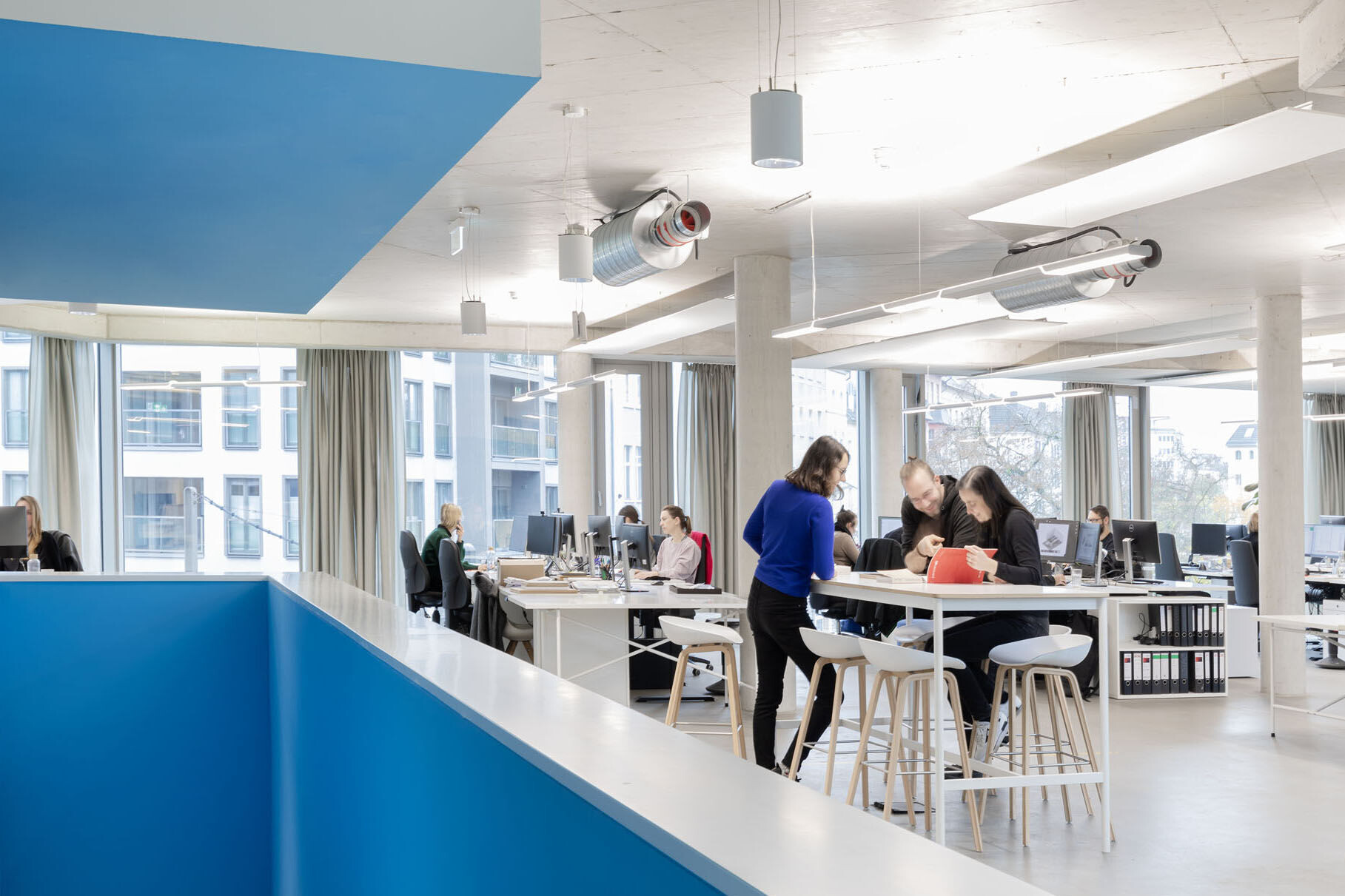
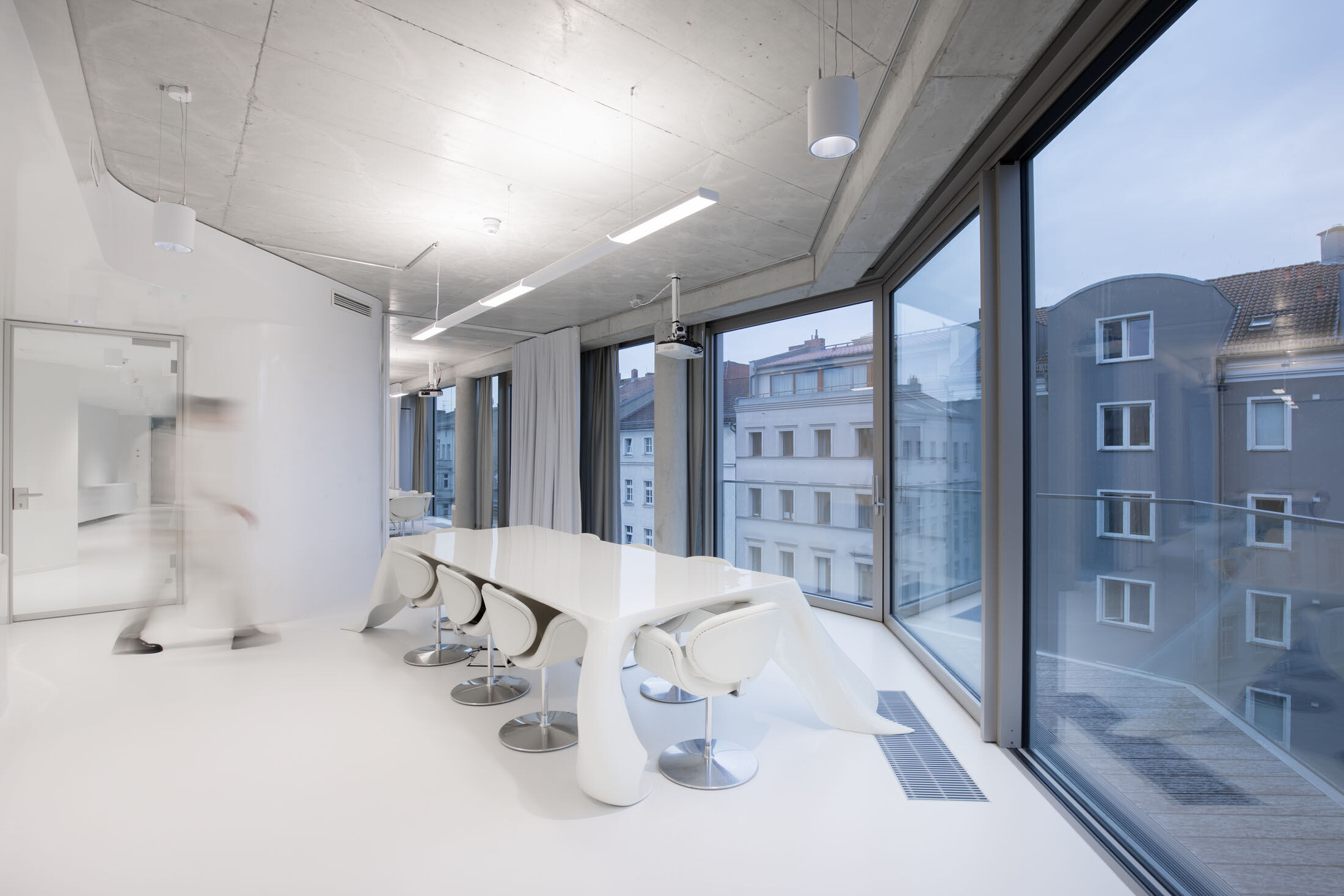
Project partners: Lars Krückeberg, Sven Fuchs, Wolfram Putz, Georg Schmidthals, Thomas Willemeit
Project lead: René Lotz, David Wurth, Raphael Hemmer, Matthias Rümmele
Planning team: Paulo de Araujo, Benedikt Boschert, Justin Bouttell, Marvin Bratke, Evgenia Dimopoulou, Ana Maria Galvez Castillo, Sebastian Gernhardt, Agata Glubiak, Thomas Grabner, Felix Grauer, Philippe Grotenrath, Moritz Hanshans, Dennis Hawner, Jean-Rémi Houel, Izabela Anna Kordyka-Ostrowska, Sascha Krückeberg, Thomas Niederberger, Paula Rosch, Thomas Quisinsky, Benjamin Rieß, Louise Seyb, Jörg Stanzel, Elena Suarez, Max Unterfrauner, Philip Weibhauser, Max Wittkopp
Coordinator GRAFT: Tobias Hein
Relocation team GRAFT: Nikolas Krause, Niklas Labuhn, Roman Puzicha
